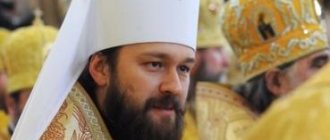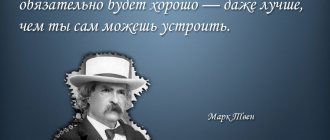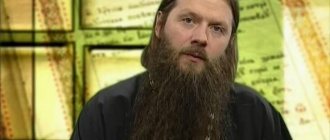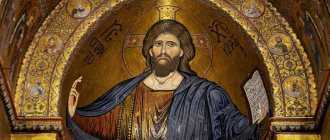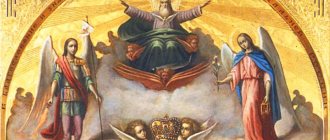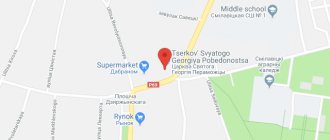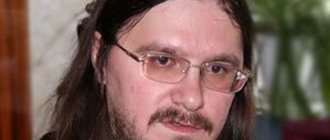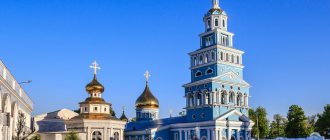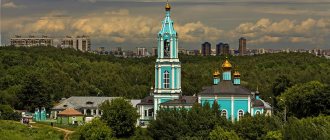Icons have long been revered in Orthodoxy and are especially highly venerated in Russia and other countries of the world where the Russian Orthodox Church is present. As a result of the persecution that followed the church in the 20th century by the Soviet government, many icon painting traditions were lost. In our time, they are being revived by such icon painters as Archimandrite Zinon, who painted many modern icons in the Byzantine tradition. In addition, thanks to his works, many churches and monasteries in Russia, France and Belgium, on Mount Athos were painted.
Icon painter, theorist, church art, teacher
Father Zinon is known as one of the outstanding modern icon painters. His merit lies in the fact that he began to be one of the first to revive the icon-painting traditions of Russian Orthodoxy. They were lost during the persecution of the church. Almost no textbooks or any materials devoted to the Byzantine icon-painting tradition have survived to this day. It is she who is canonical in the Russian Orthodox Church.
Master class by one of the leading icon painters of our time, Archimandrite Zinon (Theodore). September 19, 2013. Icon painting department of SPbDA
The Archimandrite had to restore this knowledge bit by bit, copying ancient icons and engaged in their restoration. Thanks to such painstaking work, he managed to revive the ancient icon painting school of Russian icon painters of the 15th - 16th centuries. The icon painter passes on his knowledge to others, while claiming that he has no students. In support of this argument, he argues that teaching requires the transmission of tradition, and he only teaches the technique of writing.
Father Zinon is the author of several books. They are dedicated to modern icon painting. In addition, he also has essays on religious topics. Despite his monasticism, he quite actively interacts with the media, expressing rather radical opinions on the topic of renovationism. He had to suffer for his independent views, so pardons were imposed on him due to the fact that he participated in the Catholic mass and received communion with the Catholics.
sources
- Karelina A.
Return of the Pechora hermit: The ban on the service of the famous monk-icon painter has been lifted // NG Religions. - 2002. - No. 1 (96). - Kurbatov V. Ya.
My fathers. “I will go down to Your house.” - Pskov: House of Printing GPPO, 2013. - 352 p. — 3,000 copies. — ISBN 978-5-94542-296-4. - Church at the site of the death of Archpriest Alexander Men // alexandrmen.ru.
Footnotes
- Vespers according to the ancient rite and an evening of questions and answers were held in our church // Fedorovsky Cathedral. — 2013. — July 4. – Date of access: 4.7.2017.
- Catholic announcement in the Orthodox cathedral // Antimodernism.ru. – 2014. – June 22. – Date of access: 18.2.2017.
- Kurbatov V. Ya.
My fathers. “I will go down to Your house.” - Pskov: House of Printing GPPO, 2013. - 352 p. — 3,000 copies. — ISBN 978-5-94542-296-4. - Zinon (Theodore), Fr.
When the Word became flesh // alexandrmen.ru.
An outstanding modern icon painter was involved in the church from childhood
Archimandrite Theodor Zinon (in the world Vladimir Mikhailovich Theodor), was born into the family of Mikhail Nikolaevich Zinon on October 12, 1953. Place of birth - the city of Pervomayskoe, Nikolaev region of Ukraine. Mikhail Nikolaevich Theodor, his father, was a famous shepherd and was awarded the title of Hero of Socialist Labor. Despite this circumstance, Father Zinon was involved in church life from childhood. This is the merit of his grandmother, who began taking him to church from early childhood.
Archimandrite Zinon (Theodor) during a visit to the exhibition “Modern Icon Painters of Russia.” From childhood, he was introduced to church life by his grandmother and therefore became an icon painter.
He graduated from eight classes of Pervomaisk Secondary School No. 4. By the time he graduated from the educational institution, his desire to become an artist was finally formed. As a result, at the age of fifteen in 1969, he entered the painting department of the Odessa Art School. Here he first becomes acquainted with the text of the Gospel. This happened in the second year of study, and it was then that the future famous icon painter realized that he would not be a secular artist.
Since in Soviet times literature on icon painting techniques was not freely available, and icon painting teachers were repressed and, for the most part, died, Father Zinon learned all the secrets of icon painting on his own. To do this, he began to copy those icons that were available to him. As a result, he himself mastered the canons of icon painting, techniques and artistic techniques of writing. It is quite natural that the authorities did not like the activities of the young icon painter. The theme of his thesis, the triptych “Andrei Rublev,” was not liked by his supervisor, who demanded that it be changed.
Video: “Lecture on icon painting”: video from the “Our Life” section. The lecture is given by art critic Irina Yazykova on June 8, 2017.
After graduating from the Odessa Art School, Vladimir was drafted into the army. Here he served as an artist. Despite the fact that during his service the future icon painter painted portraits of military leaders and military equipment, he still found time to paint icons.
essays
- Zinon (Theodore), Fr.
Conversations of an icon painter / Comp.
I. V. Spivak. - Riga, 1992. Zinon (Theodor), Fr.
Conversations of an icon painter / Comp. I. V. Spivak. Preface V. Ya. Kurbatova. - Novgorod: Russian Province, 1993. - 64 p. — 10,000 copies. — ISBN 5-87266-009-X. - Zinon (Theodore), Fr.
Conversations of an icon painter. — Riga: Foundation named after Fr. Alexandra Menya, 1997. - Zinon (Theodore), Fr.
Conversations of an icon painter. - St. Petersburg: Bibliopolis, 2003. - Zinon (Theodore), Fr.
Conversations of an icon painter. - St. Petersburg: Bibliopolis, 2021.
The icon painter Zinon spent many years in monasteries, decorating them
In 1975, Father Zinon was demobilized from the army and went to work as an artist at the Assumption Cathedral in Odessa. While still in the army, he had a desire to retire from worldly life. On September 5, 1976, he became a novice of the Pskov-Pechersk Monastery. Already on September 30, the abbot of the monastery Gabriel (Steblyuchenko) tonsured him as a monk under the name Zinon. Three days later, the icon painter was ordained to the rank of hierodeacon, and in November he became a hieromonk.
Pskov-Pechersky Monastery in our time from a bird's eye view. Staying here had a huge impact on the future fate of Archimandrite Zinon
The Pskov-Pechersky Monastery is associated with the acquaintance of the person who had more influence on the fate of Father Zinon. The fact is that even before being drafted into the army, he came here in 1973. Here he met Father Alypiy (Voronov), who was considered at that time a well-known devotee of ancient Russian icon painting. Father Alypius taught Zinon a lot. Unfortunately, he was not able to work with him, since while the icon painter was serving in the army, Father Alypius died.
After two years of staying in the Pskov-Pechersky Monastery, Father Zinon acquired such fame for his works that Patriarch Pimen took away his Trinity-Sergius Lavra. Here the icon painter painted the iconostasis of the limits in the crypt of the Assumption Cathedral. He also created a large number of individual icons. These icons were placed both in churches of the local diocese and in the homes of parishioners. In addition, they were actively purchased by collectors.
Vladimir spent seven years in the monastery, but he was embarrassed by the worldly bustle outside the walls of the monastery. In order to deal less with worldly temptations, he asked to go to Pskov, where it was quieter. In 1983, the Patriarch sent Archimandrite Zinon to the Danilovsky Monastery. Here, for a year, the master was engaged in the restoration and decoration of the monastery. After this time, he was released to the Pechersky Monastery.
Photo of the Danilov Monastery in our time. Here the icon painter Zinon became famous
While working at the Danilov Monastery, the icon painter Zinon became known as the leading icon painter in Russia. In this capacity, he began to be invited abroad. So he was a teacher at an icon painting school in Seriate, Italy, and worked in France and Belgium, decorating and restoring local Orthodox monasteries.
quotes
Yves Haman - you probably know him, he is close to Father Alexander (Mene), and in his book at the very beginning of the 90s he calls Father Alexander a prophet, apostle and martyr, and this is a very correct definition and description of his mission in this world. It seems to me that Christianity should be preached to modern people in exactly this way, in such language. Then, Father Alexander is a completely unique and outstanding phenomenon. It was a titan. I respect him very much and hope that the time will come when he will be canonized. For me, two such figures are Mother Maria Skobtsova and Father Alexander Men[4].
Prohibitions were imposed on Archimandrite Zeno
Zinon is not limited to iconography. He actively participates in church discussions and is a supporter of renovationist changes in Orthodox worship. For example, he advocates replacing the church language in Divine services with Russian. The icon painter signed the Appeal dated April 10, 1994, which calls for discussion regarding issues of liturgical structure.
These extraordinary views led to one incident that negatively affected Zinon's life. The fact is that he was appointed head of the icon painting school of the Mirozhsky Monastery. His appointment took place in 1994, and in 1996 the gate church in the name of St. Stephen the First Martyr was restored. For her, Father Zinon created a unique stone iconostasis. In addition, he painted for him images of the Savior, the Virgin Mary and saints, which were placed in medallions.
Archimandrite Zinon with the brethren of the Mirozh Monastery and students from Italy. Photo courtesy of T. Dubrovina-Ledina. Participation in a Catholic mass became the reason for the imposition of sanctions on Archimandrite Zinon
A loud scandal broke out due to the fact that, as the head of the school, Father Zinon gave consent to Romano Scalfi, who held the position of director working in Italy, to celebrate Mass. In addition, he himself took part in this Catholic mass, which took place in the unconsecrated chapel of the Spaso-Preobrazhensky Mirozhsky Monastery. Moreover, at the end of the liturgy, he took communion with the Catholics, which is strictly prohibited by all the canons of the Orthodox Church.
Archbishop of Pskov and Velikoluksky Eusebius imposed rebuke not only on the icon painter, but also on the monks John and Paul. In addition, he expelled Zinon from the clergy of the Pskov diocese. Father Zinon has repeatedly stated that this decision is hypocritical, since many bishops and clergy do the same as him. At the same time, the icon painter always said that he would patiently wait for the bans to be lifted.
Vladyka Eusebius, Archbishop of Pskov and Velikoluksky. They imposed bans on Archimandrite Zinon
This happened in 2002. The decision was made by Patriarch Alexy II himself, bypassing Archbishop Eusebius. Before this, a number of publications were published in the press justifying Zinon and accusing those participants of the mass who complained about his actions during the Catholic mass of denunciation.
The charges against Zinon were lifted, but he was not allowed to work
After father Zinon was punished, he settled in the village of Gverston, which is located on the border of the Pskov region and Estonia. A small community formed around him, which within five years built a temple in the Romanesque style. Workshops and utility buildings were also built and equipped.
Thus, he was unable to return to the Pskov-Pechersky Monastery, even after the bans on him were lifted by decree of Patriarch Alexy II. His students and other artists who lived with him were also unable to continue working on the icons. The paintings of Zinon were recorded in a savage way, despite the fact that they were recognized as cultural monuments. In addition, lay people were no longer accepted into the icon painting school at the monastery.
Our Savior Not Made by Hands, Father Zinon, Church of the Transfiguration of the Lord in the village of Gverston. This mosaic was created by Father Zinon in the temple he built in the village of Gverston
During his life in the village of Gverston, Archimandrite Zinon was actually forbidden to leave the temple he built with icon-painting workshops. Priests who supported him, such as Vladimir Arsenyev, were persecuted. In order to be able to work, the icon painter left for Austria in 2005. Here he supervised the painting of St. Nicholas Cathedral in Vienna.
Many believers familiar with the work of the archimandrite ask: where is Father Zinon now? From media reports it is known that since 2008, he has been on Mount Athos. There he painted the temple in the Greek monastery of Simonopera. He periodically comes to Russia, visiting churches and monasteries as a restorer and icon painter.
An icon is a silent sermon, says Father Zinon
The icon painter Zinon is known throughout the Orthodox world. His activities are aimed at reviving the traditions of Byzantine icon painting. In addition, he is working to restore the artistic heritage of the Russian Orthodox Church, lost after 1917. Thanks to him, the canons of modern icon painting are formed.
The icon painter completed the largest number of his works in the early years, from 1970 to 1980. The style of all icon paintings is Old Russian, XV - early XVI centuries. The first works are significantly influenced by the icon painter Juliania (Sokolova). Later, the archimandrite began to study more complex Pskov icon painting, as a result of which pre-Mongol and Byzantine motifs appeared in his works. In the 1990s, he became acquainted with the work of early Christian icon painters of Sinai, Rome, and Ravenna, which was also reflected in his works.
St. Seraphim of Sarov. Archimandrite Zinon (Theodor), iconostasis of the Seraphim chapel of the Trinity Cathedral, Pskov, 1988
The most famous icons, written by Archimandrite Zinon, are in those churches that he restored. Among them are:
- "Forerunner";
- "Apostles Peter and Paul";
- "Alexander Nevskiy";
- "Mary Magdalene":
- "Rev. Seraphim of Sarov."
The latest works of Zinon the Icon Painter were made using various techniques. They are focused on more ancient eras, for example, the era of Justinian. Many of the artist's works are rare and therefore of great value to collectors.
Archimandrite Zinon, speaking about his work, says that it is impossible to learn church art quickly; this requires at least 15 years. In addition, the icon painter must be a churchgoer, a prayer book, a monk, only then will he be able to convey what should be depicted on the icon. An artist who puts money first in his work is no longer an artist.
In addition to professionally painting icons, Father Zinon creates encaustic paintings and mosaic patterns. He also enjoys designing temples, entrances, arches, church gates and book decorations.
Cover of the book “Conversations of an Icon Painter” written by Fr. Zinon and published in 2015
He also writes his own books, in which he talks about modern icon painting. In addition, he communicates quite often with representatives of the press, lay people, and worldly artists. His work is highly appreciated by the state, as he is a laureate of the State Prize in the field of art, which he was awarded in 1995.
By leaving a comment, you accept the user agreement
Creation
Icon "Transfiguration", 1997
Zinon's early works (1970 - early 1980s) were made in the traditions of ancient Russian icon painting of the 15th - early 19th century. XVI centuries, the influence of the nun-icon painter Juliania (Sokolova) is noticeable. In the mid-1980s, Zinon, studying Pskov icon painting of the 14th-15th centuries, began to use images of pre-Mongol Russian painting and Byzantine traditions in his works. Since the mid-1990s, he turned to the early Christian art of Rome, Sinai, and Ravenna.
In addition to tempera painting, Zinon works in mosaic and encaustic techniques. Engaged in the design of temples, sketches of utensils and vestments, and design of books.
Archimandrite Zinon is considered one of the successors of the Byzantine traditions of icon painting.
| When they come to me and express a desire to master church art, I say that in our time you need to study this for at least fifteen years, regardless of the level of artistic training,” says Archimandrite Zinon. — An artist who puts money first is no longer an artist. |
Works
- Danilov Monastery: iconostasis in the traditions of the 15th-16th centuries for the Church of the Fathers of the Seven Ecumenical Councils (lower Intercession chapel).
- In 1985, he painted the Church of St. Paraskeva Pyatnitsa in the Vladimir region.
- in the Pskov-Pechersky Monastery: he created the iconostases of the churches of the Venerable Martyr Cornelius (1985), the Intercession over the Assumption Cathedral (1990) and the Pechersk Saints on the Hill (1989-1991).
- In 1988, Fr. Zinon wrote for the ancient Trinity Cathedral of Pskov the iconostasis of the lower church, consecrated in the name of St. Seraphim of Sarov.
- Participated in painting the refectory of the New Valaam Monastery in Finland
- in the Holy Cross Monastery of Chevetogne in Belgium (en: Chevetogne Abbey)
- Church of St. Stephen in the Mirozhsky Monastery
- painting of the temple in the name of St. Sergius of Radonezh at the Semkhoz station near Moscow, erected in memory of Alexander Men, who was killed in this place. Zinon painted the temple for two years.
- painting of St. Nicholas Cathedral in Vienna, Austria.
- paintings in the Simonopetra monastery on Mount Athos.
- lower temple of the Feodorovsky Cathedral in St. Petersburg.
Exhibitions
- Russian icon of the late 20th - early 21st centuries. (Pskov, 2003)
- Contemporary icon painters of Russia (Moscow, December 10, 2015 − January 19, 2016).
